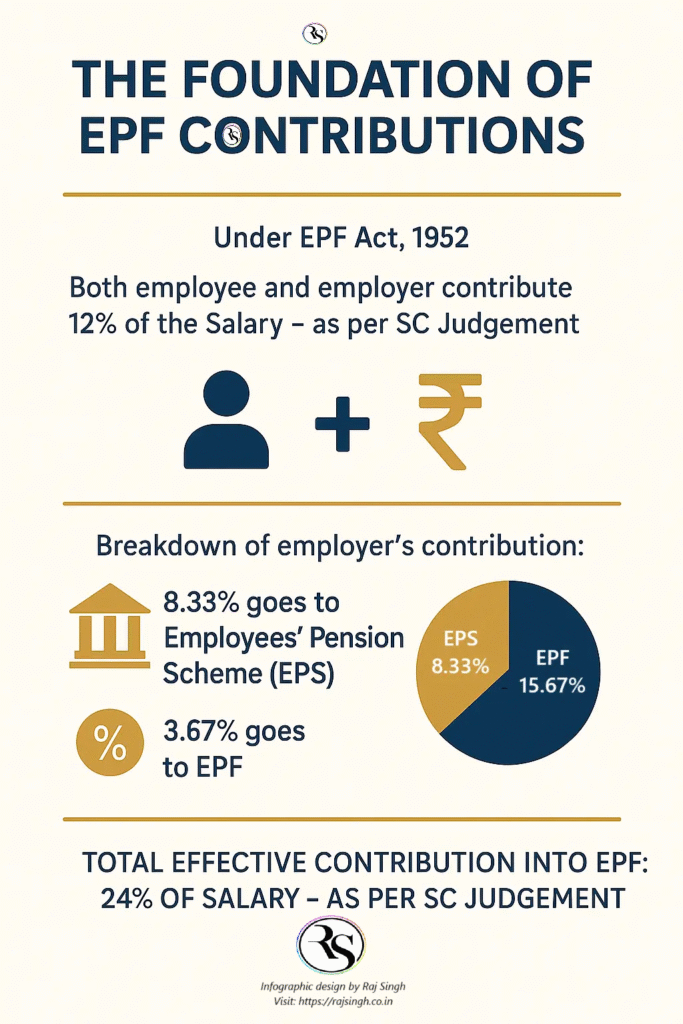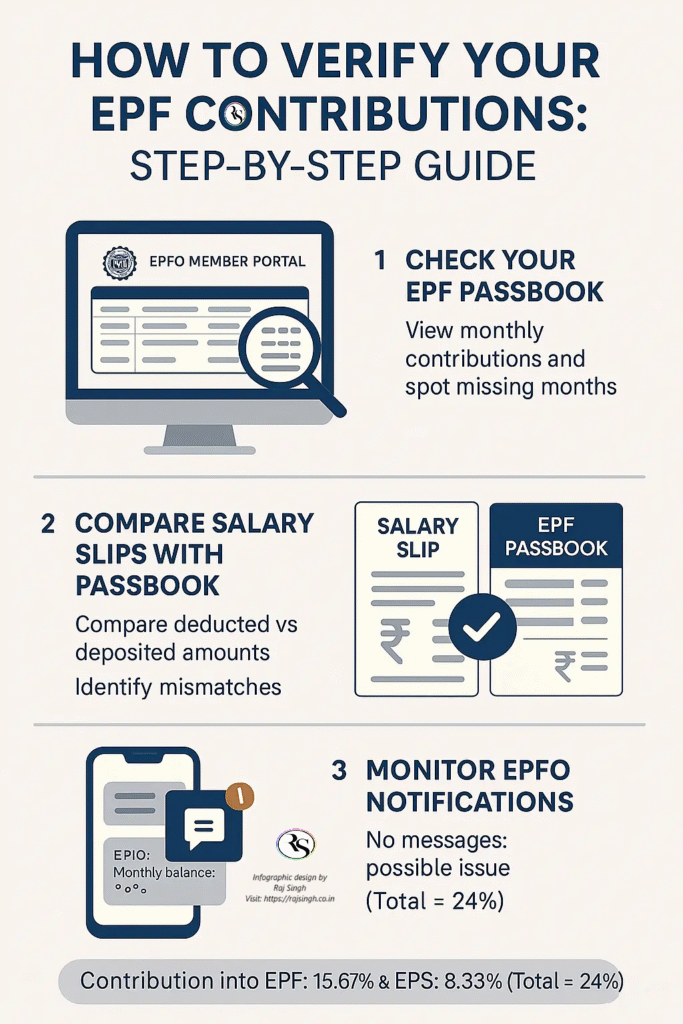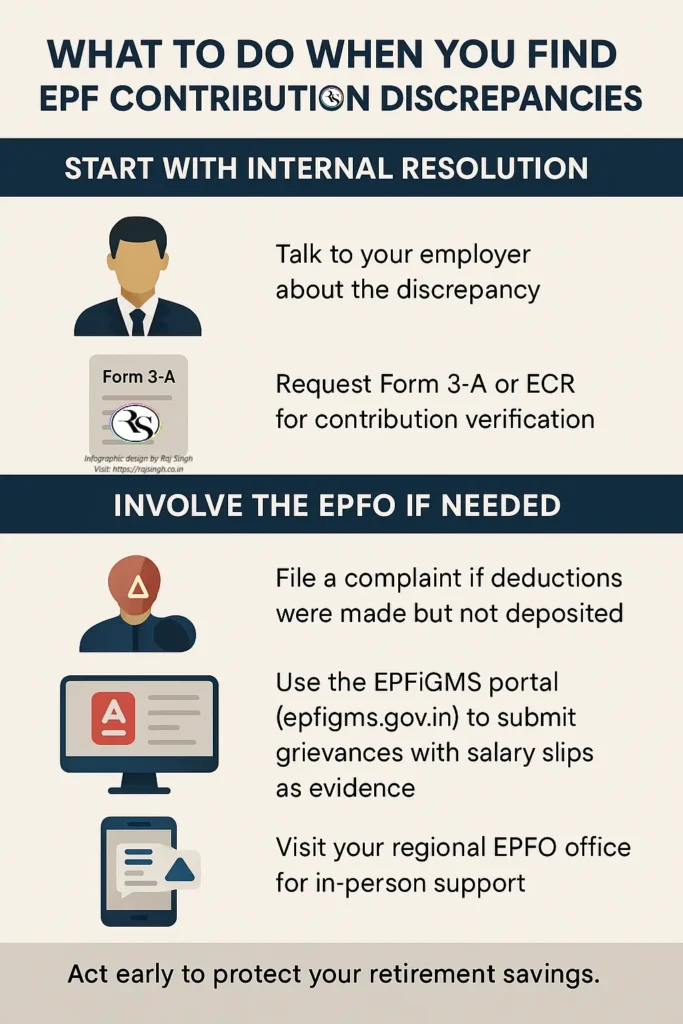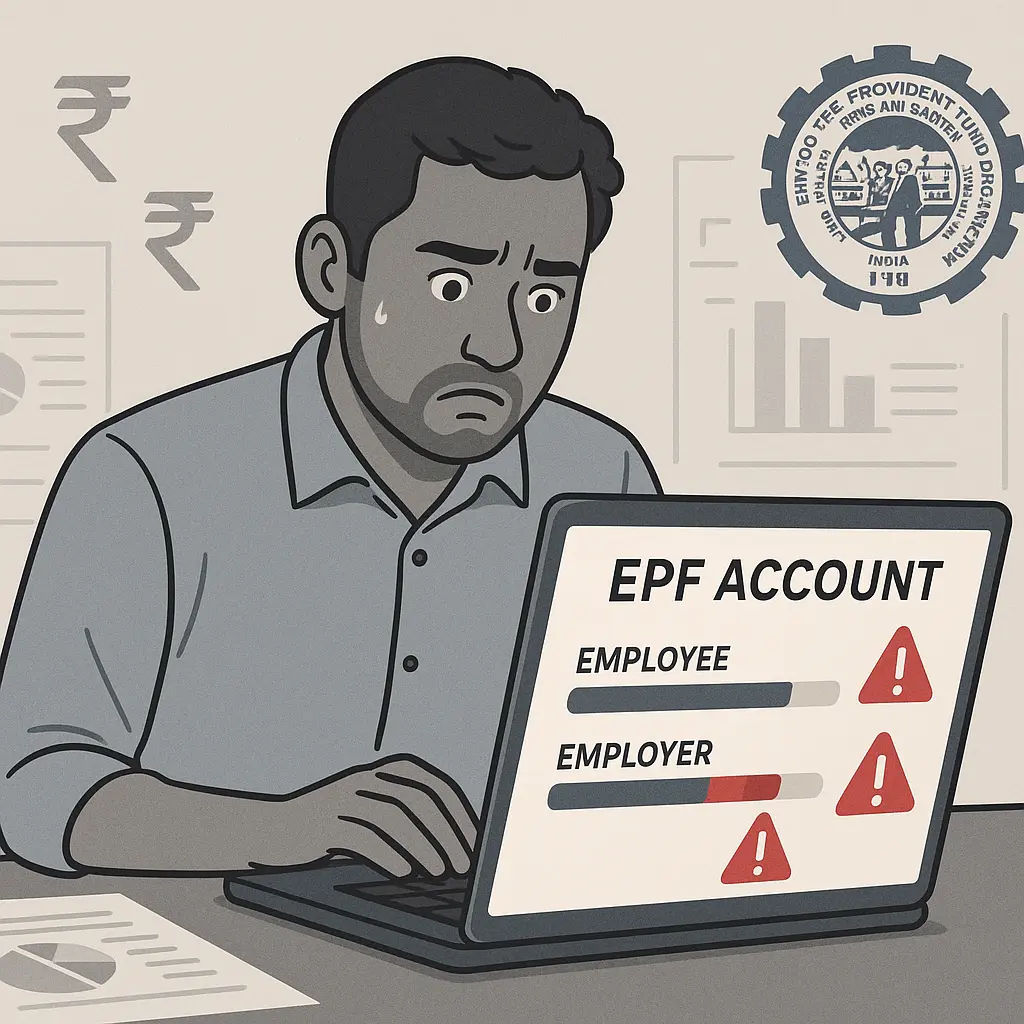As HR professionals, we often encounter questions about how to rectify discrepancies when something is amiss or when incorrect contributions have been made by the employer to an employee’s PF account.
Having personally gone through the process of investigating such discrepancies, I wanted to create a guide that not only informs but also reassures. My hope is that by the end of this article, you’ll feel more confident in identifying issues and taking the right steps to resolve them. 😊
Why EPF Matters to All of Us
The PF contribution isn’t just a line item on a salary slip—it’s a crucial pillar of financial security for nearly every employee in India. It is designed to ensure long-term stability after years of hard work. But what happens when things don’t go as planned—when contributions are missed, misreported, or simply not made at all?
That’s when confusion, concern, and even anxiety can start to set in. Having seen firsthand how frustrating this experience can be, I wrote this article to simplify the process of identifying and resolving PF-contribution related issues.
Understanding EPF Contributions – A Quick Recap
Under the Employees’ Provident Funds and Miscellaneous Provisions Act, 1952, both employees and employers must contribute 12% of the employee’s salary (PF wages). Here’s how it breaks down:
- Your 12% goes directly into your EPF account.
- Your employer’s 12% is divided as:
- 8.33% to the Employees’ Pension Scheme (EPS)
- 3.67% into your EPF account

So, a total of 24% of your PF wages (plus administrative charges, which are borne by the employer) are contributed every month. That’s quite a solid foundation for retirement, assuming everything goes smoothly.
But Why Do Discrepancies Happen?
Unfortunately, things don’t always go as intended. Here are some reasons I’ve encountered, both personally and through employee reports:
- Company Financial Struggles: Sometimes, employers delay contributions due to cash flow issues.
- Administrative Errors: Even a small mistake—wrong UAN, mismatched names—can block or delay payments.
- Lack of Awareness or Training: HR or payroll teams might not be fully trained on EPFO processes.
- Serious Misconduct: In rare but alarming cases, employers deduct EPF but fail to deposit it—a clear violation and a punishable offense.
Understanding the “why” can help you approach the “how” more effectively.
How to Spot an EPF Discrepancy
I can’t stress this enough, regularly checking your PF passbook is one of the best habits you can build. Here’s what I recommend:
- Check Your PF Passbook Online:
- Use the UAN Member Portal (e-passbook) to track monthly contributions.
- Look for missing months or inconsistent deposits.
- Compare with Your Salary Slips:
- Cross-reference PF deductions on your payslips with passbook entries.
- Any mismatch is a red flag.
- Pay Attention to SMS Alerts:
- EPFO sends monthly updates to your registered number. If you stop receiving them, don’t ignore it—investigate.

Steps to Take if You Find Discrepancy:
Here’s what has worked in real cases I’ve handled:
1. Talk to Your Employer First
Start by speaking to HR or payroll. Often, these issues are fixable with a few clarifications. If needed, request:
- Form 3-A (Contribution Card)
- ECR (Electronic Challan cum Return)
These will give you detailed insights into your monthly contributions.
2. Submit a Written Request
If discussions don’t lead to a resolution, draft a short, polite email outlining:
- The specific months of discrepancy
- Evidence from your salary slips and passbook
- A reminder of their legal obligation under the EPF Act
Keep the tone professional, most HR teams are willing to help when approached respectfully.

When to Escalate to EPFO
If your employer doesn’t take action, don’t feel helpless. The EPFO has clear, structured support for employees:
1. Joint Declaration (To rectify Profile Errors):
If discrepancies have led to incorrect personal details, initiate a Joint Declaration with your employer (submit a request letter on company letterhead, the Joint Declaration Form, and the required documents — don’t forget to self-attest them).
2. Reach Out for Support:
- Helpline: 1800-118-005 (9:15 AM–5:45 PM)
- Email:
- Employees: employeefeedback@epfindia.gov.in
- Employers: employerfeedback@epfindia.gov.in
In my experience, emails usually get a documented response, which helps if you need to escalate further.
3. Filing a Complaint with EPFO – Use the EPFiGMS Portal:
- Visit: https://epfigms.gov.in or
- Click the following link for direct access: https://epfigms.gov.in/Grievance/GrievanceMaster
- Submit details, attach screenshots and required documents
- Track your complaint status online: https://epfigms.gov.in/Status
4. Visit “Nidhi Aapke Nikat” (NAN) for Direct Help:
If the issue remains unresolved, attend EPFO’s “Nidhi Aapke Nikat” program — held on the 27th of every month at all EPFO offices. Here, you can:
- Raise your grievance in person
- Get on-the-spot assistance from EPFO officials
- Understand your rights and available digital services
No prior appointment is needed; just carry relevant documents like your UAN, ID proof, and any communication with your employer.
5. Visit the Regional EPFO Office:
If you’re not getting results online, go directly to the EPFO office with your documentation. Sometimes, face-to-face resolution works best.
Most complaints are resolved within 30 working days. During this time, you’ll receive status updates via email, and you can escalate to the Grievance Redressal Officer if needed.
What Happens to Employers Who Default?
If you’re worried about whether your complaint will be taken seriously—don’t be. The EPFO has strong enforcement powers.
Legal Penalties Include:
- Damages up to 25% per annum for long delays
- Simple interest at 12% per annum
- Maximum total penalty: 100% of the arrears
- Legal action under IPC and EPF & MP Act provisions, including seizure of assets and even arrest
These consequences aren’t just theoretical—they’ve been enforced in multiple cases.
Final Thoughts: It’s Your Money—Stay Vigilant
PF is your right, not a privilege. I always remind my colleagues and employees: your retirement savings are too important to leave to chance.
Here’s how you can stay ahead:
- Check your EPF balance regularly.
- Keep record salary slips, UAN details, and correspondence.
- Don’t hesitate to ask questions or raise concerns.
Remember: This is a Shared Responsibility
While it’s the employer’s duty to contribute, it’s our responsibility to stay informed and proactive. I hope this guide helps you navigate the process more easily and encourages you to take control of your financial future.
You’ve worked hard for your savings—make sure they’re working for you. 💼💰
Related Articles:
- Employee Enrolment Campaign 2025: A Big Chance for Employers and Workers
- EPFO: Re-Engineered ECR v3.0 – Compliance Updates Every Employer and HR Must Know
- How to Rectify Discrepancies in Your Employer’s EPFO Contributions: A Personal Guide
- How to Mark Exit on the UAN Portal
- Instant PF Withdrawals from ATMs: A New Era Starting in 2025
- UAN Activation and Aadhaar Bank Linking for ELI Scheme Benefits
- Activating Your UAN for Enhanced PF Management: A Comprehensive Guide
- How to Withdraw Your Provident Fund (PF) Balance: A Clear and Engaging Guide
- Prerequisites for PF Withdrawal: A Comprehensive Guide
- UAN: Transforming EPF Management for Greater Transparency
